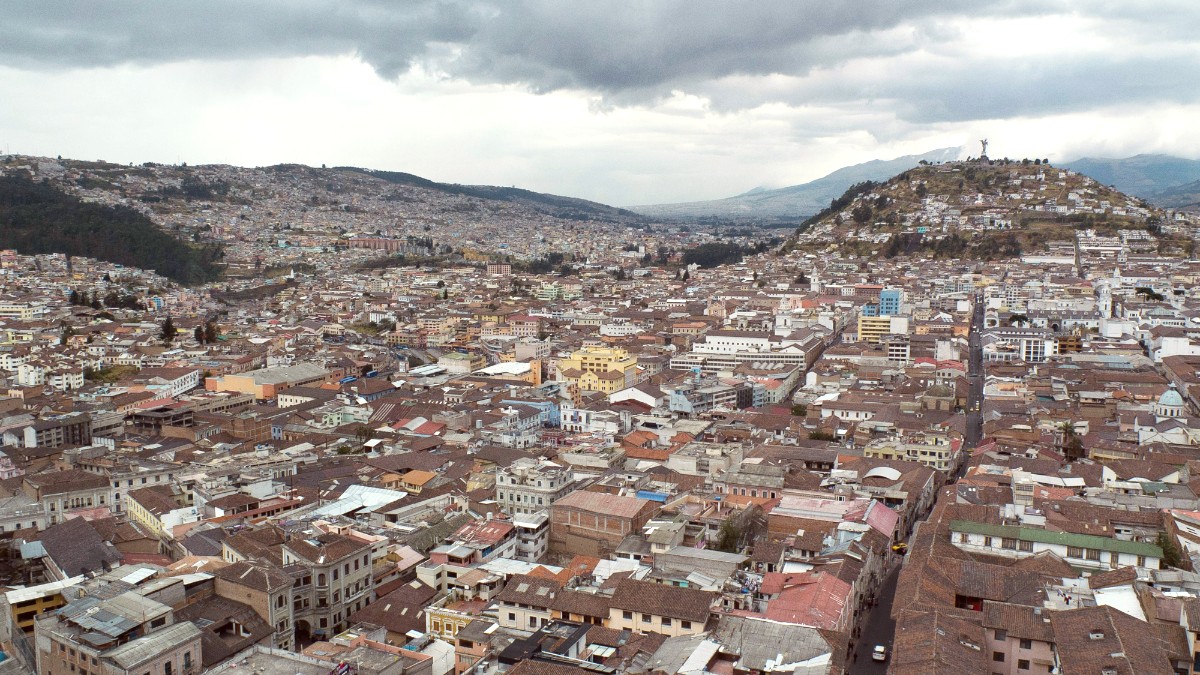
Ecuador
Ecuadorian food is hearty and comforting, designed to sustain people living at high altitudes.
The fusion of pre-Columbian ingredients like corn and potatoes with Spanish introductions like pork, chicken, and rice formed the basis of today's cuisine. Traditional cooking methods often feature slow simmers and roasting.
Quito's cuisine is typical of the Sierra (highlands) region. This means a focus on filling soups, hearty stews, and roasted meats.
Dishes often feature potatoes and corn in various forms.
Coastal regions, for example, have a greater emphasis on seafood and plantains.
A creamy, comforting potato soup. It often includes cheese, avocado, and sometimes bits of fried pork rind. Find it at most traditional Ecuadorian restaurants.
Creamy potato soup
Succulent fried pork chunks. It usually comes served with mote (hominy), llapingachos (fried potato patties), sweet plantain, and corn.
Fried pork chunks
A flavorful stew. It is with goat (chivo) or chicken (pollo), typically served with rice and avocado.
Goat or chicken stew
Higos con Queso (candied figs with fresh cheese), Espumilla (meringue-like dessert), Salchipapas (fries with hot dogs), and Pincho (grilled meat skewers).
Canelazo (warm alcoholic drink), Jugos Naturales (fresh fruit juices like mora, naranjilla, tomate de árbol, maracuyá), Pilsener/Club Premium (local beers). Llapingachos, Plátano Maduro Frito, Quimbolitos, Humitas.
For a sophisticated culinary experience, consider restaurants like Zazu, Nuema (Michelin-starred), or the restaurant at Casa Gangotena. These feature modern Ecuadorian cuisine.
Numerous options exist in both the Historic Center and the more modern La Mariscal district. These provide comfortable dining with varied menus.
Markets and small restaurants are excellent places for inexpensive and authentic meals.
While traditional Ecuadorian food is prevalent, international cuisine (Italian, Asian, etc.) options are found, especially in modern Quito neighborhoods like La Mariscal and La Carolina.
Italian, Asian, and more.
Look for these options in La Mariscal and La Carolina districts.
Mainly in modern neighborhoods.
From street food to Michelin-starred dining.
Lunch is the main meal; understand local customs.
Locro de Papa, Fritada, Empanadas, and more await.
Vegetarian options are growing; communicate allergies clearly.
Halal and kosher options are very limited in Quito. It is best to plan accordingly or prepare your own meals.
Very limited availability.
Consider preparing your own meals to meet specific dietary needs.
Plan accordingly.
Apps like HappyCow aid in locating vegetarian and vegan restaurants. Research specific restaurants beforehand.
For severe allergies, carrying a translation card is good. Be prepared for limited options.
Learn to prepare traditional Ecuadorian dishes. Many classes include a visit to a local market to source ingredients.
In La Ronda, you find workshops where artisans create traditional crafts. You observe the making of Panama hats, wood carvings, and traditional sweets. Some offer hands-on experiences.
Quito hosts many Spanish language schools. Consider a short course to improve communication skills and gain a connection with locals.
Several venues in Quito offer evening shows featuring traditional Ecuadorian music and dance, showing the country’s diverse cultural heritage.
Cultural heritage on display.
Listen to live performances of traditional Andean music in restaurants or public squares.
Authentic sound experience.
Celebrates the city's founding in December, with various events and festivities.
Holy Week (March/April) features solemn religious processions throughout the Historic Center.
Check local event listings for your travel dates to find ongoing festivals or unique happenings.
Always carry small bills for street vendors and local markets. Food safety practices are good, but for sensitive stomachs, stick to well-reviewed establishments.